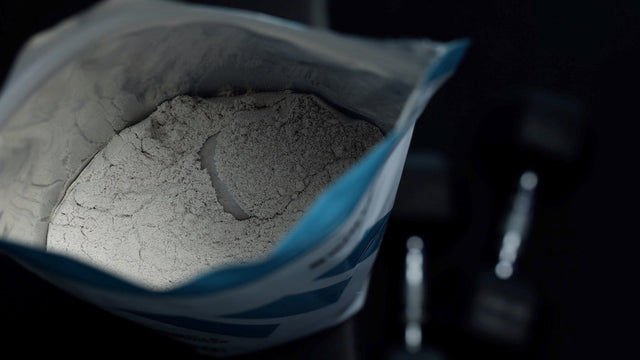Breath is the invisible engine driving your running performance. Yet, many runners overlook the power of mastering their breath, often relying on instinct rather than technique.
Whether you’re a seasoned marathoner or a casual jogger, understanding how to optimize your breathing can significantly enhance your endurance, speed, and overall enjoyment of the run.
In this article, we’ll explore essential breathing tips that will help unlock new levels of performance. From rhythmically syncing your breath with your strides to leveraging specific techniques that calm your nerves and fuel your stamina, mastering your breath is not just about survival—it's about thriving on every run. Get ready to transform your approach to running and discover the profound impact of breath on your performance!
The Importance of Breathing in Running
Breathing: The Overlooked Key to Performance
Breathing is more than just a natural function—it’s a critical component of running performance. When you run, your body’s oxygen demand increases to fuel your muscles and sustain energy output. Efficient breathing ensures oxygen is delivered where it’s needed most, helping you maintain pace, delay fatigue, and improve overall endurance. Additionally, proper breathing techniques can help regulate your heart rate and support cardiovascular health—both essential for long-distance running (Nummela et al., 2006, European Journal of Applied Physiology). Many runners underestimate the impact that breathing has on their performance. Shallow, inefficient breathing can result in poor oxygenation, early fatigue, muscle cramps, and slower recovery. By mastering your breath, you can optimize oxygen intake, regulate carbon dioxide levels, and enhance both aerobic capacity and running economy (Foster et al., 2005, Respiratory Physiology & Neurobiology). Controlled breathing doesn’t just benefit the body—it sharpens the mind. Running is as much a mental challenge as a physical one. Deep, rhythmic breathing promotes mental clarity, reduces anxiety, and keeps you focused. In fact, breathwork techniques are increasingly being studied for their impact on psychological resilience and stress management (Brown & Gerbarg, 2005, Journal of Alternative and Complementary Medicine).
Understanding the Mechanics of Breath
Diaphragmatic vs. Shallow Breathing
To effectively control your breathing during running, you first need to understand how it works. Breathing involves the lungs, diaphragm, and intercostal muscles. During inhalation, the diaphragm contracts and moves downward, creating negative pressure that allows air to fill the lungs. At the same time, the intercostal muscles between the ribs expand, increasing lung volume. Exhalation is typically passive, but during running, it becomes more forceful due to the body’s need to expel carbon dioxide efficiently. Deep, diaphragmatic breathing uses the entire lung volume, while shallow breathing only engages the upper chest. The latter limits oxygen intake and is a key contributor to early fatigue. Mastering diaphragmatic breathing enhances respiratory efficiency and promotes better endurance. The balance between oxygen intake and carbon dioxide expulsion is crucial for optimal performance. An imbalance can lead to hypercapnia (CO2 buildup) or hypoxia (oxygen deficiency), both of which hinder performance and recovery. Athletes who train their breathing mechanics can experience improvements in stamina, reduced perceived exertion, and even increased lactate threshold ([McConnell, 2011, Breathe Strong, Perform Better]).
Common Breathing Mistakes Runners Make
Shallow Breathing and Inefficiency
One of the most common mistakes runners make is shallow breathing. This inefficient pattern reduces the amount of oxygen reaching your muscles, contributing to rapid fatigue. It also increases respiratory rate, which can disrupt your rhythm and elevate your heart rate unnecessarily.
Erratic Patterns and Hyperventilation
Irregular breathing disrupts the flow of a run. Inconsistent breaths can lead to hyperventilation, dizziness, or a feeling of breathlessness even at moderate intensities. Erratic patterns also reduce your ability to match oxygen supply with muscular demand, especially in tempo or threshold training.
Breath Holding During Intensity
Holding your breath—often unconsciously—during hills or sprints restricts oxygen flow and speeds up the accumulation of lactic acid. This can cause early fatigue, cramping, and decreased performance. Learning to keep your breath flowing—even during high effort—is essential for sustained output.
Breathing Techniques for Endurance
Diaphragmatic (Belly) Breathing
This technique involves fully engaging the diaphragm for deeper inhalation. Practicing belly breathing increases lung capacity, enhances oxygen exchange, and trains your body to utilize air more efficiently. You can practice by lying on your back with one hand on your chest and the other on your abdomen. Focus on making your abdomen rise with each inhale while keeping the chest still.
Rhythmic Breathing
Rhythmic breathing involves syncing your breath with your foot strikes. A common pattern is a 3:2 ratio—inhale for three steps, exhale for two. This helps maintain a consistent flow of oxygen, minimizes the risk of side stitches, and balances pressure across the diaphragm. According to Running & FitNews, rhythmic breathing can also reduce injury risk by minimizing repetitive stress on one side of the body.
Nasal Breathing
Nasal breathing filters, warms, and humidifies the air, making it ideal for cold or polluted environments. It can also help maintain a slower breathing rate and improve CO2 tolerance. Though it may feel restrictive initially, training with nasal breathing during low-intensity sessions can increase respiratory efficiency and aerobic capacity over time (Dallam et al., 2018, International Journal of Kinesiology & Sports Science).
Optional Supplement Support for Breathing and Endurance
Hydration and Amino Acids
Hydration impacts breathing. Dehydration thickens mucus, restricts airflow, and increases perceived exertion. Swolverine INTRA EAA + Hydration provides essential amino acids and electrolytes to support fluid balance, oxygen delivery, and muscle endurance.
Recovery for Respiratory Muscles
Just like your legs, your respiratory muscles need recovery. Swolverine POST helps reduce inflammation, replenish glycogen with Carb10®, and accelerate full-body recovery—including the muscles that power your breath.
How to Incorporate Breathing Exercises into Your Training
Incorporating breathing exercises into your training regimen can significantly enhance your running performance. Start with simple breath awareness exercises to become more conscious of your breathing patterns. Spend a few minutes each day focusing on your breath, noticing how you inhale and exhale, and identifying any tendencies towards shallow or erratic breathing.
Progress to more structured breathing exercises such as box breathing, which involves inhaling, holding, exhaling, and holding again for equal counts. For example, inhale for four seconds, hold for four seconds, exhale for four seconds, and hold for four seconds. This exercise can help improve breath control and calm the nervous system, making it easier to maintain steady breathing during runs.
Incorporate these exercises into your warm-up and cool-down routines. For instance, practice diaphragmatic breathing before a run to activate your diaphragm and ensure deep, efficient breaths from the start. After your run, use controlled breathing exercises to aid in recovery and bring your heart rate back to baseline. Consistency is key, so make these exercises a regular part of your training to see long-term benefits.
The Role of Diaphragmatic Breathing in Running
Diaphragmatic breathing plays a crucial role in running by enhancing oxygen delivery and improving overall efficiency. When you breathe deeply using your diaphragm, you maximize lung capacity and increase the amount of oxygen that reaches your muscles. This can lead to improved endurance, as your muscles receive a steady supply of oxygen to sustain prolonged activity.
Engaging the diaphragm also helps to reduce the workload on the chest and shoulder muscles, which can become fatigued during long runs. By shifting the effort to the diaphragm, you can maintain better posture and reduce the risk of muscle fatigue and strain. This can translate to a more comfortable and sustainable running form, especially during long-distance runs.
Moreover, diaphragmatic breathing can aid in mental focus and relaxation. By promoting a steady, controlled breathing pattern, it helps to calm the mind and reduce anxiety. This can be particularly beneficial during races or high-pressure training sessions, where maintaining composure and focus is essential for optimal performance. Practicing diaphragmatic breathing regularly can help you harness these benefits and elevate your running experience.
Breathing Patterns for Different Running Speeds
Different running speeds require different breathing patterns to ensure optimal oxygen delivery and efficiency. For easy, steady-paced runs, a 3:3 or 4:4 breathing pattern can be effective. This means you inhale for three or four steps and exhale for the same number of steps. This pattern promotes a relaxed, steady flow of oxygen and can help you maintain a comfortable pace for longer durations.
For moderate to tempo runs, a 2:2 breathing pattern is often more suitable. Inhale for two steps and exhale for two steps to match the increased intensity and oxygen demands. This balanced pattern helps to maintain a rhythm and prevents the onset of fatigue, allowing you to sustain a faster pace without compromising your breathing efficiency.
During high-intensity intervals or sprints, a 1:2 or 2:1 breathing pattern may be necessary. Inhale for one step and exhale for two, or vice versa, to match the rapid pace and high oxygen demand. These shorter, quicker breaths help to deliver oxygen more rapidly and expel carbon dioxide efficiently, supporting peak performance during short bursts of speed. Adapting your breathing pattern to match your running intensity can help you optimize your performance across different training sessions.
Mindfulness and Breath Control During Runs
The Power of Present-Moment Awareness
Mindfulness and breath control are powerful tools that can elevate your running experience—physically and mentally. Practicing mindfulness means being fully present in the moment, bringing awareness to your breath, body sensations, thoughts, and surroundings while you run. This state of presence can help reduce distractions, improve focus, and enhance your sense of control over your pace and mindset.
Start with something simple: pay attention to your breathing. Notice the depth, rhythm, and sound of each inhale and exhale. This awareness alone can naturally regulate your breathing patterns, helping you find a smooth, efficient cadence that supports endurance and energy conservation.
Using Breath to Stay Calm and Focused
Incorporating breath control techniques into your running routine allows you to manage stress, prevent overexertion, and maintain composure—especially during tough intervals or when fatigue sets in. Deep, controlled diaphragmatic breathing calms the nervous system, lowers cortisol levels, and reduces muscle tension. When you start to feel anxious or exhausted mid-run, pausing to consciously slow your breath can center your focus and help you reset.
Mindful breath control also enhances body awareness. You’ll begin to notice subtle cues—like tension in the shoulders, slouching posture, or inefficient foot strike—allowing you to make real-time adjustments that improve running form and reduce injury risk.
Mindfulness as a Tool for Joy and Connection
Running doesn’t just have to be about numbers or goals—it can also be a way to ground yourself in the moment. Mindfulness enhances your connection to the environment, making each run more immersive and rewarding. Focus on the sensations of your feet hitting the ground, the sound of wind or birds, the feeling of air moving through your lungs. Let your breath become the anchor that brings you back to the now. By integrating mindfulness and breath control, each run becomes not only a physical practice but a form of moving meditation that builds mental resilience, clarity, and gratitude.
Tools and Gadgets to Monitor Your Breathing
Wearable Tech and Smart Devices
In today’s digital world, technology can play a helpful role in improving breathing efficiency for runners. Smartwatches and fitness trackers often feature sensors that monitor your respiratory rate, heart rate variability (HRV), and oxygen saturation. These metrics offer a snapshot of how your body is responding to effort and stress. By tracking breathing rate over time, runners can identify trends, monitor recovery, and make training adjustments accordingly.
Breathing Apps and Guided Exercises
A wide range of breathing apps are now available to support performance and mindfulness training. These apps guide you through breathing exercises, track breath cadence, and even offer feedback on stress levels. Whether you’re doing pre-run box breathing to calm the mind or post-run deep breathing to facilitate recovery, these digital tools make breathwork more accessible and consistent. Some even integrate with your heart rate data to personalize the experience and suggest improvements based on real-time feedback.
Advanced Respiratory Monitoring
For athletes looking for next-level insights, portable respiratory monitors offer detailed analytics on lung function and breathing efficiency. These devices measure tidal volume, respiratory rate, minute ventilation, and even oxygen uptake. Such data can be particularly useful for those training at altitude, in extreme climates, or recovering from respiratory illness. Understanding your unique breathing patterns allows you to tailor your warm-ups, cooldowns, and even pacing strategies for optimal performance.
By utilizing these tools and maintaining a consistent breath-awareness practice, runners can improve oxygen delivery, manage stress, and get the most out of every mile—mind, body, and breath working in harmony.
Conclusion: Elevate Your Running with Better Breathing
Mastering your breath is a game-changer for your running performance. By understanding the mechanics of breath, avoiding common mistakes, and adopting effective breathing techniques, you can unlock new levels of endurance, speed, and enjoyment. Incorporate breathing exercises into your training, focus on diaphragmatic breathing, and adapt your breathing patterns to match different running speeds.
Mindfulness and breath control can further enhance your experience, helping you stay focused and relaxed during your runs. Utilize modern tools and gadgets to monitor your breathing and make data-driven adjustments. With practice and dedication, you can transform your approach to running and experience the profound impact of breath on your performance.
So, lace up your running shoes, take a deep breath, and hit the road with newfound confidence. Mastering your breath is not just about survival—it's about thriving on every run. Embrace the journey, and let your breath guide you to new heights in your running endeavors.







